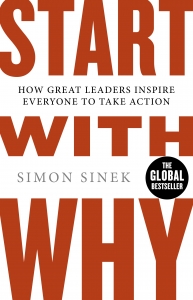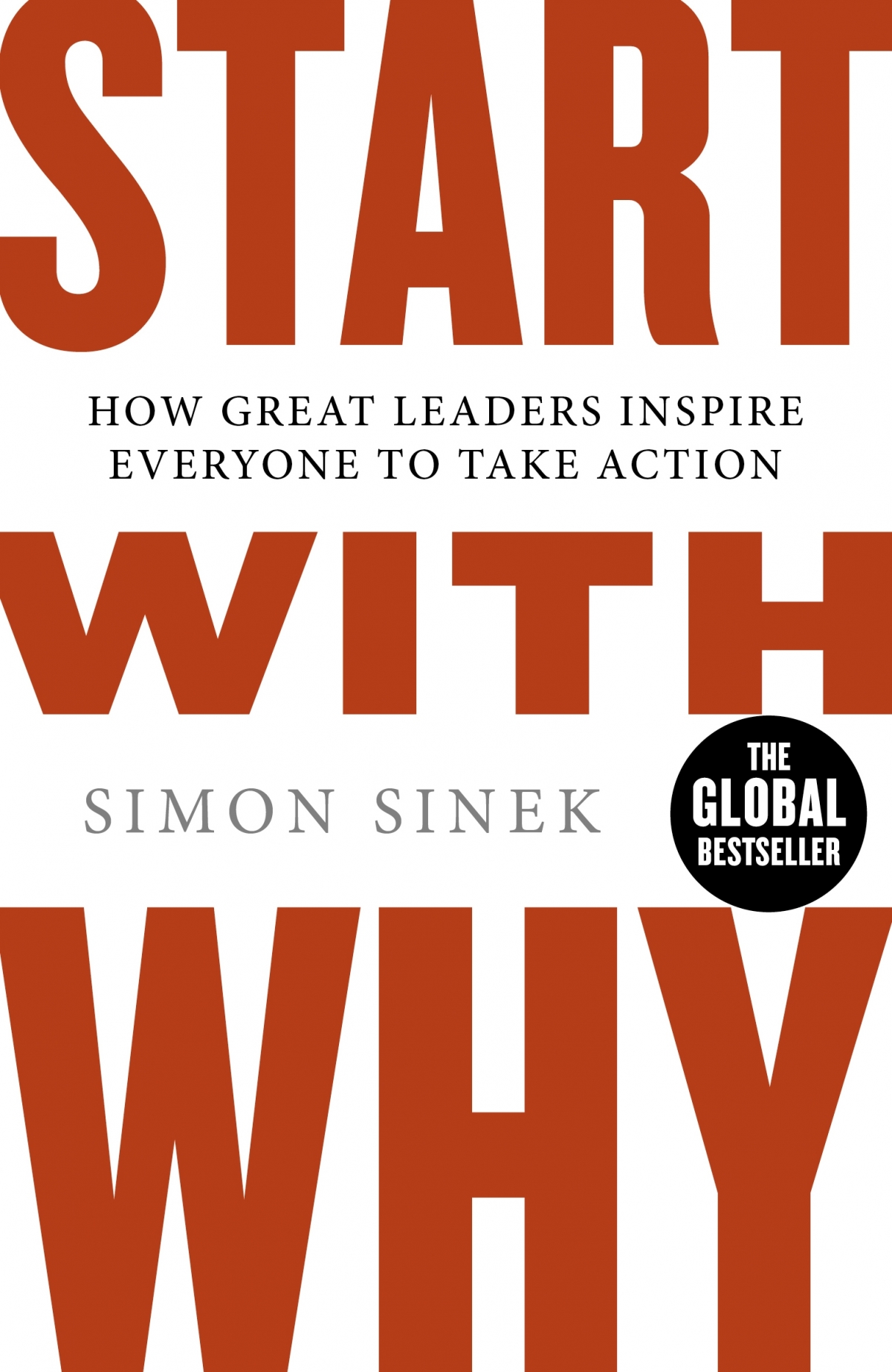
Start with Why analyses leaders like Martin Luther King Jr and Steve Jobs and discovers that they all think in the same way - they all started with why.
INTRODUCTION
WHY START WITH WHY?
“THIS BOOK IS ABOUT a naturally occurring pattern, a way of thinking, acting and communicating that gives some leaders the ability to inspire those around them. Although these “natural-born leaders” may have come into the world with a predisposition to inspire, the ability is not reserved for them exclusively. We can all learn this pattern. With a little discipline, any leader or organization can inspire others, both inside and outside their organization, to help advance their ideas and their vision. We can all learn to lead.
The goal of this book is not simply to try to fi x the things that aren’t working. Rather, I wrote this book as a guide to focus on and amplify the things that do work. I do not aim to upset the solutions
offered by others. Most of the answers we get, when based on sound evidence, are perfectly valid. However, if we’re starting with the wrong questions, if we don’t understand the cause, then even the right answers will always steer us wrong . . . eventually. The truth, you see, is always revealed . . . eventually.
The stories that follow are of those individuals and organizations that naturally embody this pattern. They are the ones that start with Why.
1.
THE GOAL WAS AMBITIOUS. Public interest was high. Experts were eager to contribute. Money was readily available.
Armed with every ingredient for success, Samuel Pierpont Lang ley set out in the early 1900s to be the first man to pilot an airplane. Highly regarded, he was a senior officer at the Smithsonian
Institution, a mathematics professor who had also worked at Harvard. His friends included some of the most powerful men in government and business, including Andrew Carnegie and Alexander
Graham Bell. Langley was given a $50,000 grant from the War Department to fund his project, a tremendous amount of money for the time. He pulled together the best minds of the day, a veritable dream team of talent and know-how. Langley and his team used the fi nest materials, and the press followed him everywhere. People all over the country were riveted to the story, waiting to read that he had achieved his goal. With the team he had gathered and ample resources, his success was guaranteed.
Or was it?
A few hundred miles away, Wilbur and Orville Wright were working on their own flying machine. Their passion to fly was so intense that it inspired the enthusiasm and commitment of a dedicated
group in their hometown of Dayton, Ohio. There was no funding for their venture. No government grants. No high-level connections. Not a single person on the team had an advanced degree or even a college education, not even Wilbur or Orville. But the team banded together in a humble bicycle shop and made their vision real. On December 17, 1903, a small group witnessed a man take flight for the first time in history.
How did the Wright brothers succeed where a better-equipped, better-funded and better-educated team could not?
It wasn’t luck. Both the Wright brothers and Langley were highly motivated. Both had a strong work ethic. Both had keen scientific minds. They were pursuing exactly the same goal, but only the Wright brothers were able to inspire those around them and truly lead their team to develop a technology that would change the world. Only the Wright brothers started with Why.
2.
IN 1965, STUDENTS on the campus of the University of California, Berkeley, were the first to publicly burn their draft cards to protest America’s involvement in the Vietnam War. Northern California
was a hotbed of anti-government and anti-establishment sentiment; footage of clashes and riots in Berkeley and Oakland was beamed around the globe, fuelling sympathetic movements across the
United States and Europe. But it wasn’t until 1976, nearly three years after the end of America’s military involvement in the Vietnam conflict, that a different revolution ignited.
They aimed to make an impact, a very big impact, even challenge the way people perceived how the world worked. But these young revolutionaries did not throw stones or take up arms against an authoritarian regime. Instead, they decided to beat the system at its own game. For Steve Wozniak and Steve Jobs, the cofounders of Apple Computer, the battlefield was business and the weapon of
choice was the personal computer.
The personal computer revolution was beginning to brew when Wozniak built the Apple I. Just starting to gain attention, the technology was primarily seen as a tool for business. Computers were
too complicated and out of the price range of the average individual. But Wozniak, a man not motivated by money, envisioned a nobler purpose for the technology. He saw the personal computer as a way for the little man to take on a corporation. If he could figure out a way to get it in the hands of the individual, he thought, the computer would give nearly anyone the ability to perform many of the same functions as a vastly better resourced company. The personal computer could level the playing fi eld and change the way the world operated. Woz designed the Apple I, and improved the technology with the Apple II, to be affordable and simple to use.
No matter how visionary or how brilliant, a great idea or a great product isn’t worth much if no one buys it. Wozniak’s best friend at the time, the twenty-one-year-old Steve Jobs, knew exactly what
to do. Though he had experience selling surplus electronics parts, Jobs would prove to be much more than a good salesman. He wanted to do something significant in the world, and building a
company was how he was going to do it. Apple was the tool he used to ignite his revolution.
In their first year in business, with only one product, Apple made a million dollars in revenues. By year two, they did $10 million in sales. In their fourth year they sold $100 million worth of computers. And in just six years, Apple Computer was a billion-dollar company with over 3,000 employees.
Jobs and Woz were not the only people taking part in the personal computer revolution. They weren’t the only smart guys in the business; in fact, they didn’t know much about business at all. What made Apple special was not their ability to build such a fast-growth company. It wasn’t their ability to think differently about personal computers. What has made Apple special is that they’ve been able to repeat the pattern over and over and over. Unlike any of their competitors, Apple has successfully challenged conventional thinking within the computer industry, the small electronics industry, the music industry, the mobile phone industry and the broader entertainment industry. And the reason is simple. Apple inspires.
Apple starts with Why.
3.
HE WAS NOT PERFECT. He had his complexities. He was not the only one who suffered in a pre–civil rights America, and there were plenty of other charismatic speakers. But Martin Luther King Jr.
had a gift. He knew how to inspire people.
Dr. King knew that if the civil rights movement was to succeed, if there was to be a real, lasting change, it would take more than him and his closest allies. It would take more than rousing words
and eloquent speeches. It would take people, tens of thousands of average citizens, united by a single vision, to change the country. At 11:00 a.m. on August 28, 1963, they would send a message to Washington that it was time for America to steer a new course.
The organizers of the civil rights movement did not send out thousands of invitations, nor was there a Web site to check the date. But the people came. And they kept coming and coming. All told,
a quarter of a million people descended on the nation’s capital in time to hear the words immortalized by history, delivered by the man who would lead a movement that would change America forever: “I have a dream.”
The ability to attract so many people from across the country, of all colors and races, to join together on the right day, at the right time, took something special. Though others knew what had to change in America to bring about civil rights for all, it was Martin Luther King who was able to inspire a country to change not just for the good of a minority, but for the good of everyone. Martin Luther King started with Why.”
Extracted from Start with Why by Simon Sinek, out now.
___________________________________________________________________________________________________________________________
 |
 |
|
YOU MAY ALSO ENJOY
Extract: Thinking the Future by Clem Sunter and Mitch Ilbury







